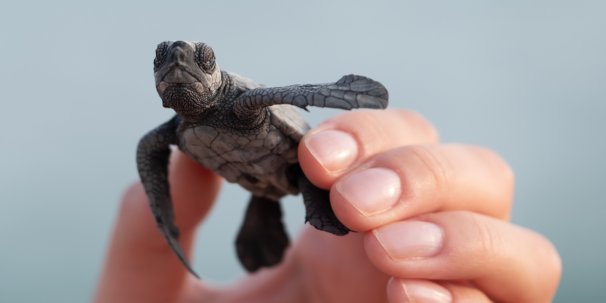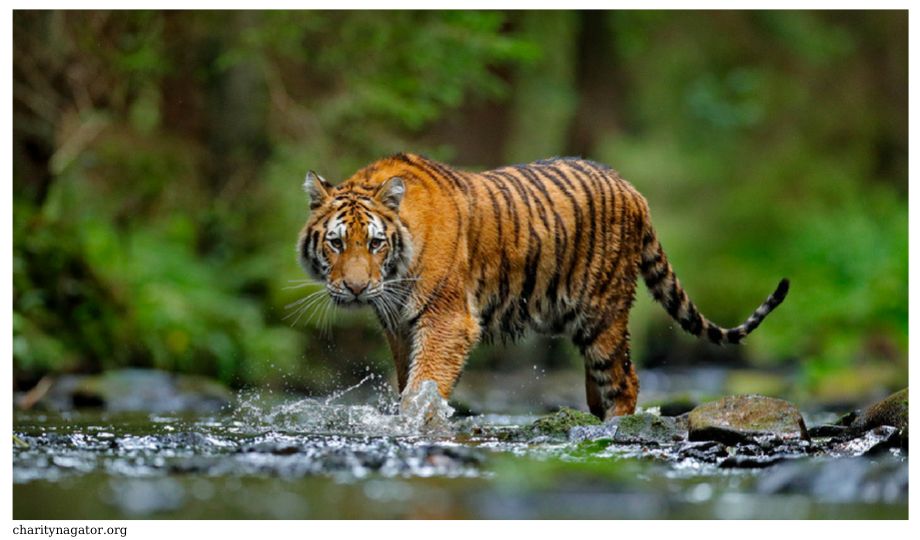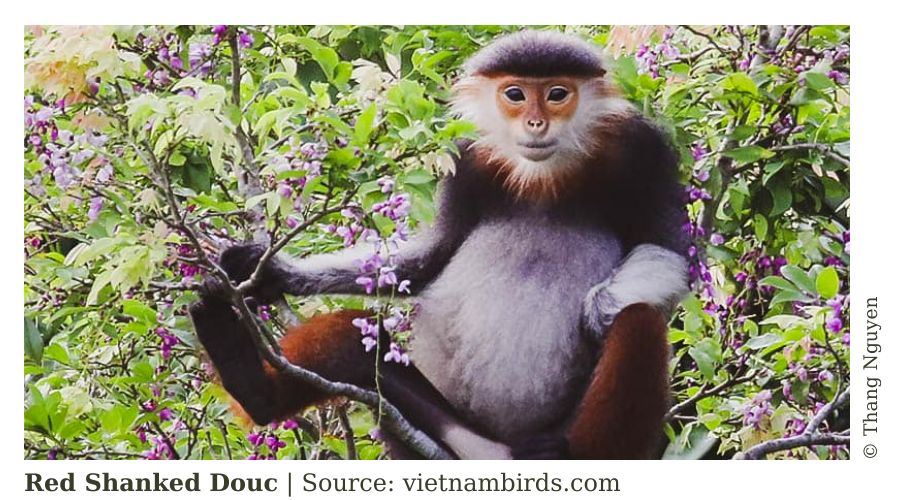Discover what the goal of wildlife conservation is, why we need wildlife conservation, which wildlife is endangered, and how you can help towards conservation efforts.
If you’re an environmentally conscious person, you’ve undoubtedly heard of wildlife conservation. While the term is used frequently, it’s not always possible to pinpoint exactly what efforts are being made.
So, what is the goal of wildlife conservation? What is being done to preserve wildlife and our planet? Here, we tackle these questions and much more. Read on to learn all there is to know about wildlife conservation.
Table of Contents
- What is wildlife conservation?
- Why do we need wildlife conservation?
- Causes of endangered animals and plants
- Which wildlife is endangered?
- What is the goal of wildlife conservation?
- Wildlife conservation methods
- How can we help wildlife conservation?
- Final thoughts
What is wildlife conservation?
We can define wildlife conservation as any efforts taken to protect any species of wildlife (plants and animals included) along with their habitats. When we say protection, this includes the preservation, management, and restoration of wildlife.
Wildlife protection means preventing any extinction and endangerment where possible. This could be in the form of bringing animals back to good health, creating sustainable habitats, assisting in breeding programs, and much more.

As we discovered in our open step at the University of York, a major part of global wildlife conservation is protecting a single species in its core habitat. However, it’s important to understand how biodiversity can be maximized – we should assist as many species as possible.
Conservation biology
A lot of wildlife conservation practices are influenced by conservation biology. Today, humans are putting more pressure on nature than ever before, and many animals and plants need conservation efforts. Conservation biology deals with the effects that humans have on our environment.
Why do we need wildlife conservation?
We now know why wildlife conservation is critical to keeping our wildlife and planet alive. But why do we need wildlife conservation? Is it important to pursue wildlife conservation?
In an ideal world, conservation efforts would not be necessary to keep up a healthy and thriving planet. However, we’re still in a position where we desperately need global wildlife conservation. There’s more to it than just protecting individual species – promoting biodiversity plays a huge role in it too.
Biodiversity is the variation of animals, plants, and microorganisms in an environment. As we found out in our open step, it’s made up of three interwoven factors: ecosystem diversity, species diversity, and genetic diversity.
We need biodiversity as it provides us with healthy ecosystems which supply us with oxygen and food resources amongst other things.
Wildlife conservation efforts go towards the protection of wildlife, human health, and the planet. Let’s explore each of these areas further:
Human health
No matter who you are and where you are, we are all directly affected by our natural environment. That’s why it’s in our own best interests to keep biodiversity intact. Humans and nature are tremendously interlinked – we rely on nature for water, food, energy, and well-being.
One of the main reasons we need conservation to protect human health is the threat of disease. Many diseases (including COVID-19) originated from an animal host. Overpopulation and deforestation are bringing us closer to wild animals.
By bridging the gap between the two, we are exposing ourselves to even more zoonotic risks. The worsening of climate change also poses similar threats, as we found out in our article on how climate change is threatening human health.
As well as maintaining a healthy environment for ourselves, it’s also important to keep our planet in good condition for future generations to come. Some experts even say that we can expect the next mass extinction to begin by the year 2100, which is a terrifying thought.
Planet
Wildlife plays an essential role in the world’s ecosystem, providing balance to many of nature’s processes. The natural world is in steady decline, and if we continue to lose animals and plants, we risk losing the biodiversity of our planet.
As we discovered in our 6 ways you can prevent extinction blog post, biodiversity is essential to keeping a fully functioning ecosystem. Without an effective conservation plan, we risk a loss of biodiversity, which will destabilize ecosystems.
Wildlife
This is obvious, but wildlife conservation is needed to keep many magnificent species alive. Not only do they contribute to essential processes, but they’re incredible creatures and plants that come in all shapes and sizes. It would be devastating to lose out on these animals amongst us.
By increasing efforts to assist wildlife wherever possible, we’re able to reduce endangerment and extinction risks.
Causes of endangered animals and plants
There are many different causes of endangerment and extinction. Some, but not all, of the driving factors include:
Loss of habitat
Many human activities are stripping wildlife of their natural habitats. Material mining, deforestation, lumber harvesting, and agriculture are all contributing to habitat loss.
Devastatingly, in the last ten years alone, we have lost one-third of all of the world’s forests. These forests are home to thousands of species, all at risk of endangerment each time they lose their habitats. Deforestation is one of the key driving factors of habitat loss.
Pollution
Pollution comes in many forms – all of which are harmful to the environment. Pollutants in the ocean alone have a massive impact on wildlife – it is reported that over 100 million marine animals die as a result of plastic waste alone.
Climate change
Tied with habitat loss, climate change is also contributing to the destruction of animal homes. It poses threats in the form of flooding, wildfires, water scarcity, and severe temperatures. There are many contributors to climate change, including agriculture, industrial activity, and transportation.
By now, you probably realize that many of the reasons for endangered wildlife are due to human intervention. The sad truth is, many of our day-to-day actions are having draining effects on the planet, pushing the need for conservation.
We can help reduce our carbon footprint by learning about important sustainability issues such as climate change and environmental challenges. Once we’re aware of our impact on the environment, we can begin to make positive changes that lead to a more sustainable planet.
Which wildlife is endangered?
Sadly, for many species, it’s too late to prevent extinction. We’ve lost 900 species within the last 5 centuries, and according to the IUCN red list, there are 40,000 species at risk of extinction today. That’s a scary thought, right? Let’s look at a few of the amazing animals that are unfortunately on the critically endangered list:
- Javan Rhinoceros
- Eastern Gorilla
- Spiny giant frog
- Siamese crocodile
- Woylie
- Orange-bellied parrot (one of the few species we listed in our endangered species in Australia article)
These are only a handful of incredible species facing the threat of extinction. Our IUCN Red List of Ecosystems course provides even further information in regard to which species and ecosystems are at risk.
What is the goal of wildlife conservation?
If you’re reading this, you’re probably curious about what wildlife conservation is trying to achieve. The goal of wildlife conservation is to support the survival of wildlife and educate others about sustainable practices.
While it’s clear that wildlife conservation is aimed at protecting animals and plants, it’s not always clear how that is being done. Let’s unpack the goals and activities of wildlife conservationists.

There are countless wildlife conservation charities and foundations across the globe. From worldwide leaders to local charities, they’re all doing their part to protect wildlife. Let’s look at some of the wildlife conservation charities and organizations:
- World Wildlife Fund for Nature – formerly known as the World Wildlife Fund, the WWF is the world’s leading conservation organization. Their work is focused on conserving wildlife, climate, forests, food, fresh water, and oceans.
- The Wildlife Trusts – this UK-based independent charity focuses on saving both wildlife and wild places. They aim to preserve wildlife as well as bring people closer to nature.
- Marine Conservation Society – Another UK-based charity, the Marine Conservation Society is all about protecting our oceans. Their work includes practical conservation activities as well as educating others about conservation.
- Fauna & Flora International – Addressing a range of conservation issues, Flora & Fauna works in over 40 countries. Its mission is to conserve threatened species and ecosystems worldwide.
As well as charities and organizations work, there is also a lot of legislation in place to protect wildlife. Some of the relevant legislation includes:
- CITES – the Convention on International Trade in Endangered Species of Wild Fauna and Flora is a global wildlife conservation agreement among governments. It is in place to protect all endangered animals and plants.
- Wildlife and countryside act – this UK-based act prohibits the taking, killing, injuring, and disturbing of wild animals.
- Convention on biological diversity – this is another global wildlife conservation agreement that covers all aspects of biodiversity. It protects all ecosystems, species, and genetic resources.
Wildlife conservation methods
It’s great that wildlife charities and legislations exist – but what are they actively doing to promote wildlife conservation? Let’s explore some of the methods being carried out to conserve wildlife.
- Nature reserves – providing and maintaining nature reserves offer many creatures and plants a place to call home. This is increasingly important with cities becoming more and more urbanized, often revoking potential habitats from wildlife.
- Raising awareness – a common goal for many of these charities is to spread awareness of wildlife conservation needs. Not everyone is aware of the impact humans have on wildlife and the planet, but by spreading awareness, we can get others to make sustainable lifestyle choices.
- Animal rescue – some charities offer emergency care for wildlife, often rehabilitating them and releasing them into the wild. Wildlife charities can even specialize in specific species, which is particularly important for those who are endangered.
- Breeding programs – many zoos and aquariums partake in captive breeding programs. By assisting the breeding of wild animals, they can support genetic backup to wild populations. This is ideal for animals that are poor at breeding in general (such as the panda).
- Species reintroduction – part of the work conservationists do is reintroducing species back into their natural habitat once they have become locally extinct, helping restore biodiversity. Local extinction is when an animal becomes extinct in one area but still exists elsewhere in the world.
How can we help wildlife conservation?
The more people we have put their efforts towards protecting wildlife, the more effective our efforts will be. So, how can we go about chipping in and helping secure a safe planet?
Wildlife charities
We explored some of the wildlife charities earlier, but depending on where you live, the charities and foundations around you will differ. It’s worth looking into which ones are near you. To find out about some of the conservation work in the Philippines, check out our endangered species in the Philippines article.
Many local charities welcome volunteers, so if you have any free time and want to help out at a local conservation center, you can always apply to do so. Spreading awareness of these charities helps, too, even if it’s just a social media share. Let’s get people talking about wildlife conservation!
Protect habitats
If you don’t want to commit to a voluntary conservation role but have some free time on your hands, you can help protect local habitats. Especially if you live in an urban area, the chances are that local wildlife doesn’t have as many options for clean habitats as they should.
This could include tidying local parks, maintaining plants in your garden, or even creating some habitats for local animals. Why not try making a hedgehog house or a bug hotel?
Learn about sustainability
One of the best ways you can help protect wildlife is to learn more about sustainability and incorporate your learning into daily life. Since so many of the environmental threats are human-driven, it makes sense to try and reduce any negative impacts we may have.
Being sustainable can just be in the form of being more environmentally conscious when doing your weekly shopping. Why waste more resources when you can cut them down and help save the planet?
Source: https://www.futurelearn.com/
Crocodile Trail – The Best Birding Trail in Cat Tien National Park
If you’re a birder or nature photographer planning a trip to Vietnam, few places offer [...]
Cong Troi Trail – Top 1 Dalat Plateau Birding Trail Experience
If you’re a birder or nature photographer planning a trip to Vietnam’s Central Highlands, the [...]
How to Identify the Greater Sand Plover, Tibetan Sand Plover and Siberian Sand Plover
ContentsWhat is wildlife conservation?Causes of endangered animals and plantsWhat is the goal of wildlife conservation? Identification [...]
Highlights of Cat Tien National Park Reptiles and Amphibian Endemics
Spanning over 71,350 hectares of tropical forests, grasslands, and wetlands, Cat Tien National Park is [...]
Highlights of Cat Tien National Park Mammals in a World Biosphere Reserve
In addition to reptiles and birds, Cat Tien National Park is also rich in mammals, [...]
Kontum Plateau Endemic and Highlight bird
Kontum Plateau Endemic And Highlight Bird species like Chestnut-eared Laughingthrush and top birding routes while [...]